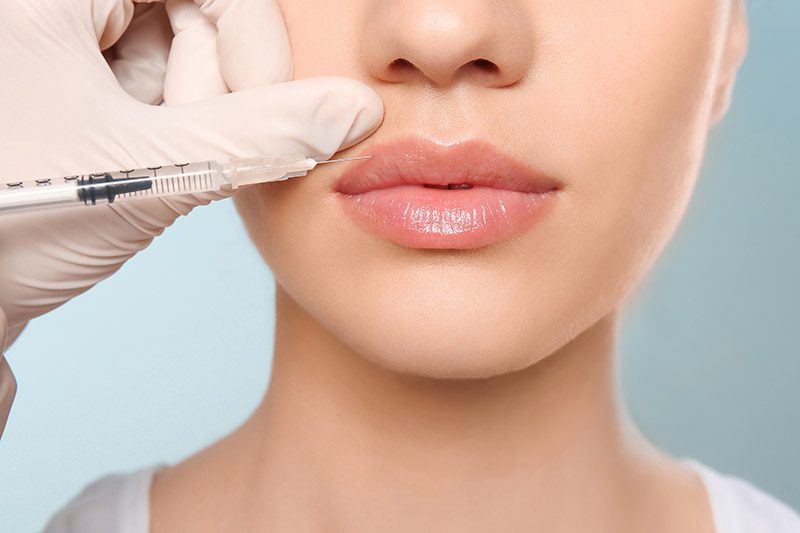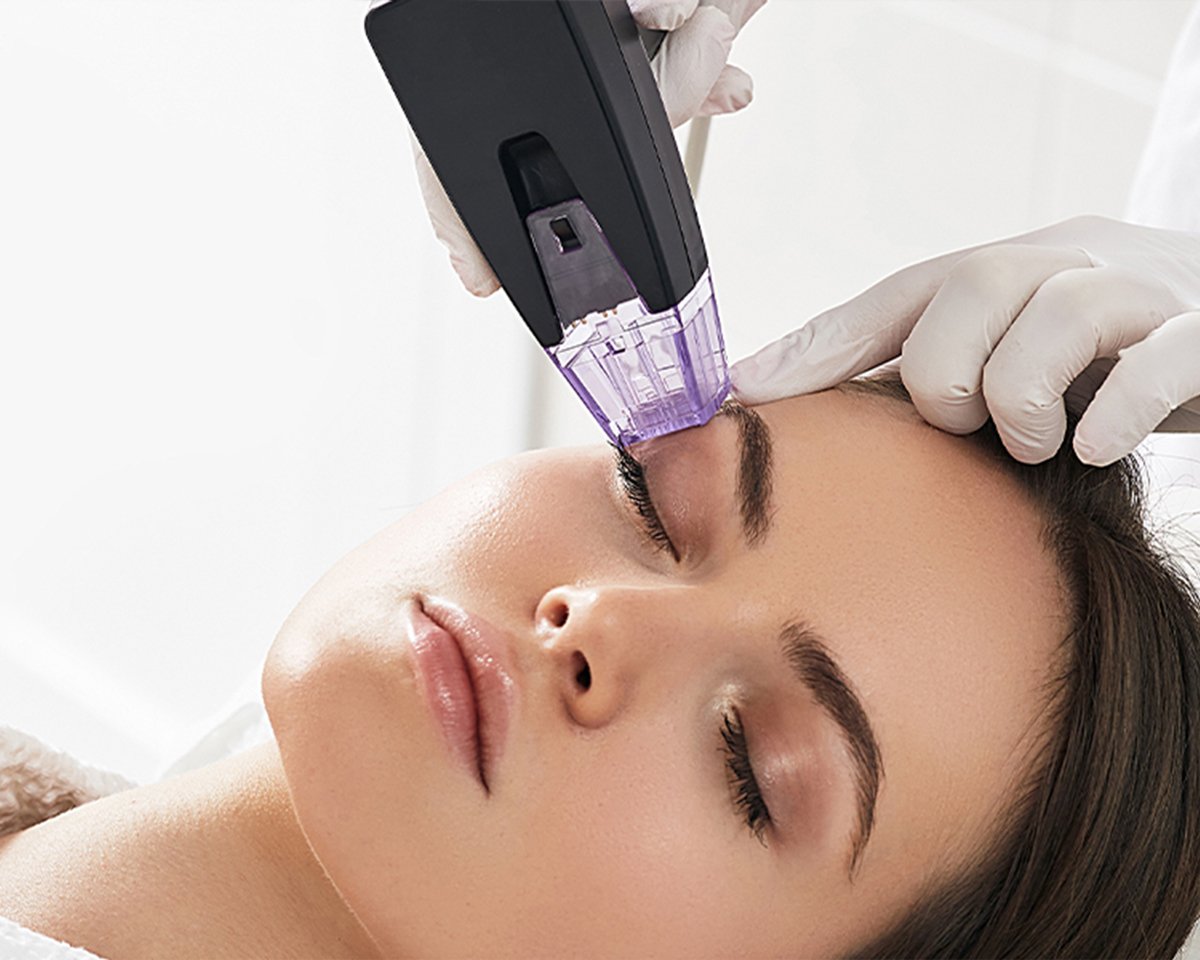
PRP Face prp treatment for face platelet rich plasma vampire facial PRP before and after vampire facial, plasma, plasma facial, plasma treatment, PRP facial prp treatment for face Platelet-rich plasma facial rejuvenation, PRP therapy for facial skin. Facial PRP injections for skin revitalization. Platelet-rich plasma facial treatment, PRP facelift procedure, PRP facial rejuvenation benefits Platelet-rich plasma (PRP) facial treatment. Microneedling with PRP. Blood facial rejuvenation, Non-surgical vampire facelift. Platelet-rich plasma facial aesthetics. Facial micro-needling with PRP infusion platelet rich plasma Platelet-rich plasma therapy, PRP for skin rejuvenation. PRP injection. Platelet-rich plasma in aesthetic medicine. Benefits of platelet-rich plasma injections PRP facelift PRP before and after photos. Platelet-rich plasma (PRP) therapy results, PRP results, PRP outcomes, PRP effectiveness and visible changes
Table of Contents
What is PRP Facial?
Also referred to as the “vampire facial,” platelet-rich plasma (PRP) has garnered considerable attention, leading some to believe it holds the key to eternal youth.
Natural Cosmetic Treatment: PRP facial treatment is considered a more natural approach to cosmetic enhancement because it utilizes the patient’s own blood components. The PRP is obtained by processing a small amount of the patient’s blood, concentrating the platelets, and then re-injecting the PRP into specific areas of the face.
Platelet-Rich Plasma (PRP): PRP is rich in growth factors, proteins, and other bioactive substances that play a crucial role in the body’s natural healing and regenerative processes. When applied to the face, PRP can stimulate cellular repair and regeneration.
Improvement in Texture and Tone: The growth factors in PRP contribute to the improvement of skin texture and tone. They can promote collagen production, which enhances the elasticity and firmness of the skin, reducing the appearance of fine lines and wrinkles.
Wrinkle Reduction: PRP facial treatment is often sought after for its potential in reducing wrinkles and fine lines. By encouraging the generation of new collagen, PRP helps to restore a more youthful and smoother appearance to the skin.
Encouraging Collagen Growth: Collagen is a crucial protein that provides structure and support to the skin. PRP promotes the growth of new collagen, which can lead to improved skin elasticity and a more youthful complexion.
Cellular Healing: The injection of PRP into the skin initiates a process of cellular healing. This can result in improved skin quality, reduced scarring, and an overall rejuvenated appearance.
Microneedling with PRP
It’s important to note that individual results can vary, and the effectiveness of PRP facial treatment may depend on factors such as the patient’s skin condition, age, and overall health. Consulting with a qualified practitioner is essential to determine if PRP facial treatment is suitable for an individual and to discuss expectations and potential outcomes.
If you’re contemplating undergoing a vampire facelift, it’s essential to be well-informed. Here’s a breakdown of what PRP entails:
prp treatment for face platelet rich plasma vampire facial PRP before and after
What is PRP?
PRP is a three-step procedure that involves extracting blood from your arm, processing it through a machine to isolate the platelets from the rest of the blood, and finally reintroducing the platelet-rich portion back into your body through injection.
A PRP facial treatment is a holistic cosmetic procedure that entails the injection of platelet-rich plasma (PRP) into the face. PRP, derived from blood, contains growth factors and proteins that facilitate cellular healing. When introduced into the skin, PRP can enhance texture and tone, diminish wrinkles, and stimulate the production of new collagen.
In addition to its cosmetic applications, PRP proves to be an effective remedy for hair restoration. Furthermore, it finds utility in sports medicine for treating injuries. The versatile nature of PRP highlights its potential in promoting healing and rejuvenation across various medical and aesthetic fields.
How does PRP work?
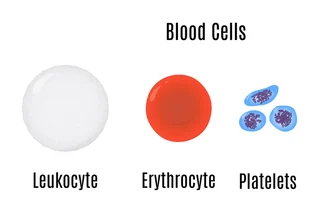 Our blood comprises plasma, red blood cells, white blood cells, and platelets, with platelets playing a crucial role in blood clotting and the production of growth factor proteins essential for healing. PRP facial rejuvenation harnesses the healing properties of platelets from your blood to promote skin renewal. The growth factors derived from platelets are vital for maintaining the skin’s plumpness and elasticity.
Our blood comprises plasma, red blood cells, white blood cells, and platelets, with platelets playing a crucial role in blood clotting and the production of growth factor proteins essential for healing. PRP facial rejuvenation harnesses the healing properties of platelets from your blood to promote skin renewal. The growth factors derived from platelets are vital for maintaining the skin’s plumpness and elasticity.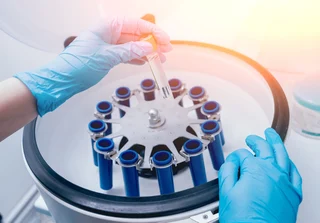
To initiate the process, a medical professional will draw a small vial of blood, and place it in a centrifuge to separate the platelet-rich plasma (PRP) from the red and white blood cells. This centrifugal process concentrates the platelets, significantly elevating their count, and yielding impressive results. Subsequently, the PRP solution is ready to address various skin concerns.
What is PRP treatment used for?
PRP, or Platelet-Rich Plasma, is a medical treatment that utilizes a patient’s own blood to stimulate healing and regeneration in various tissues. The treatment involves extracting a small amount of the patient’s blood, processing it to concentrate the platelets, and then injecting the PRP into the targeted area. Here are some of the common uses of PRP treatment:
prp treatment for face
PRP Hair Treatment: PRP injections into the scalp are often used to promote hair growth and prevent hair loss. This treatment is particularly recommended for conditions like androgenic alopecia, which is a common form of hair loss in both men and women.
PRP Facial Treatment: PRP injections on the face are utilized for various cosmetic purposes. This includes treating wrinkles and fine lines, addressing acne scars, improving skin texture, reducing dark circles, and even addressing stretch marks. The growth factors in PRP stimulate collagen production and enhance tissue regeneration, contributing to a more youthful appearance. It is known as Vampire Facial.
Acute Injuries: PRP injections are applied to treat acute injuries, especially in orthopedics. This includes injuries like knee sprains, muscle strains, and other soft tissue injuries. The growth factors in PRP can aid in the healing process and promote tissue repair.
PRP Treatment for Skin: PRP is employed for skin rejuvenation and addressing various skin conditions. The regenerative properties of PRP make it effective in treating skin ulcers, hyperpigmentation issues, and signs of burns. It can enhance the natural healing process and improve the overall health and appearance of the skin.
Platelet-rich plasma facial aesthetics
It’s important to note that while PRP has shown promising results in various applications, the effectiveness of the treatment may vary from person to person, and more research is needed to fully understand its potential benefits and limitations. Additionally, it’s crucial to consult with a qualified medical professional before undergoing any PRP treatment to ensure it is appropriate for your specific condition.
What can PRP do for aging skin on the face?
PRP (Platelet-Rich Plasma) therapy or vampire facial can offer several benefits for aging skin on the face:
Superficial Skin Issues: PRP is effective in addressing various superficial skin concerns, such as fine lines, wrinkles, and uneven skin texture. It promotes collagen production, which contributes to a smoother and more youthful appearance.
Acne Scars: PRP therapy can effectively minimize the appearance of discolored, dark, and deep acne scars. The growth factors and proteins in PRP contribute to the regeneration of skin cells, aiding in the improvement of skin texture.
Collagen Production: While PRP may not significantly tighten excessively loose or sagging skin, it can stimulate collagen production. Multiple sessions can lead to noticeable increases in collagen, which, in turn, may contribute to a restoration of vitality and health to severely aged skin.
It’s important to note that for more advanced cases of sagging or loose skin, other skin tightening treatments might be recommended in conjunction with or as an alternative to PRP therapy. The effectiveness of PRP in addressing aging skin depends on individual factors, including the extent of aging and the specific concerns to be addressed. Consulting with an Aesthetic Doctor can help determine the most suitable treatment plan based on individual needs and goals.
Micro-needling vs Injection | or Both?
There are different approaches to undergoing a PRP facial, each offering unique benefits. The first option involves spreading plasma on your face, followed by micro-needling across the forehead and cheeks to aid in the absorption of proteins. Micro-needling, a procedure that creates tiny, superficial holes using sterile needles, is employed to stimulate collagen growth, complementing the effects of PRP.
The second option, known as the vampire facial, entails injecting the plasma into the skin similar to a filler. This dual-action targets the skin problem both beneath the surface and on top of it. While there is limited research on the effectiveness of vampire facials, one study indicated improvements in participants who received PRP injections in one cheek and saline in the other.
These diverse methods showcase the versatility of PRP facials, offering individuals options based on their preferences and specific skin concerns.

prp treatment for face platelet rich plasma vampire facial PRP before and after
Are you a good candidate for Vampire Facial?
Vampire Facial stands out for its inclusivity, making it an attractive option for nearly any man or woman seeking skin enhancement. This procedure proves effective across various skin types and ages, making it suitable for individuals at different stages of their anti-aging and skin rejuvenation journey. It serves as an excellent choice for those just beginning to explore such treatments.
Moreover, PRP facials are ideal for individuals aiming to maintain the health of their skin or enhance its appearance, especially in preparation for significant events. Before commencing the procedure, a thorough review of your questions and concerns ensures that PRP facial rejuvenation aligns with your specific needs and goals. This personalized approach enhances the overall suitability and success of the treatment for each individual.
Is PRP Face painful?
The level of pain experienced during a PRP facial treatment with microneedling can vary based on individual pain tolerance. While microneedling is generally well-tolerated, some patients may encounter mild discomfort or a sensation akin to a light sunburn during the procedure. It’s essential to communicate any discomfort to your practitioner, especially if it becomes intolerable, so that adjustments can be made to ensure your comfort and well-being throughout the treatment. Open and honest communication with your practitioner helps in tailoring the experience to your individual needs and ensuring a positive overall treatment outcome.
prp treatment for face platelet rich plasma vampire facial PRP before and after
Is PRP safe?
Platelet-Rich Plasma (PRP) therapy is generally considered safe when administered by trained and qualified healthcare professionals. PRP is a treatment that involves drawing a small amount of the patient’s blood, processing it to concentrate the platelets, and then injecting the PRP back into the body at the site of injury or treatment. The concentrated platelets are thought to promote healing and tissue regeneration.
While PRP is considered safe for many individuals, it’s essential to consider the following:
Professional Administration: PRP should be administered by a qualified healthcare professional, such as a doctor or nurse, who is experienced in the procedure.
Sterile Technique: The procedure should be performed using sterile techniques to minimize the risk of infection.
Patient Eligibility: Not everyone is a suitable candidate for PRP therapy. Individuals with certain medical conditions or blood disorders may not be suitable candidates.
Potential Risks: While adverse reactions are rare, there can be some risks, including infection, nerve injury, pain at the injection site, and tissue damage. These risks are typically minimal, and complications are infrequent.
Effectiveness: The effectiveness of PRP for various conditions is still an area of ongoing research, and results can vary among individuals.
It’s important to discuss your medical history and any concerns with your healthcare provider before undergoing PRP therapy. They can assess whether PRP is a suitable option for your specific condition and provide guidance on potential risks and benefits. Always choose a reputable healthcare professional or clinic with experience in PRP therapy.
How many sessions do I need?
Research suggests that to achieve noticeable results, most patients undergo three or more PRP treatments. This implies multiple visits to the doctor’s office for the process of blood extraction, treatment, and reinjection.
In order to provide more immediate results, certain dermatologists opt to combine PRP with a filler. This approach enables patients to observe immediate improvements, offering a more instantaneous enhancement to their appearance. The combination of PRP and fillers allows for a comprehensive and potentially more satisfying outcome, catering to the preferences and expectations of individuals seeking prompt and visible results.

prp treatment for face platelet rich plasma vampire facial PRP before and after
What Are the Side Effects of PRP Face?
PRP Facial Rejuvenation stands out as a low-risk treatment since it involves injecting a substance sourced from your own body. While mild injection site bruising, swelling, or redness can occur, these effects typically resolve within 3-7 days post-procedure and can be safely concealed with makeup shortly thereafter. Other potential risks include infection and pain at the injection sites.
To minimize the risk of bruising and swelling, it is recommended that patients start taking Arnica, a homeopathic medication known for its natural ability to decrease bruising and swelling following procedures. This proactive measure contributes to a smoother recovery process and enhances the overall safety and satisfaction of the PRP Facial Rejuvenation treatment.
Who Should Not Get PRP Face?
You would not be considered a candidate for PRP Face treatment if you have any of the following (Contraindications):
- An impaired immune system due to immunosuppressive diseases, HIV, AIDS, or immunosuppressive medications.
- Skin conditions and diseases including: Facial cancer, existing or uncured. This includes SCC, BCC and melanoma, systemic cancer, and chemotherapy.
- Any type of blood cancer
- Low Platelet Count: PRP relies on platelets, so individuals with a low platelet count may not be suitable candidates.
- Thyroid Disease: People with unregulated thyroid disease may be advised against PRP treatment.
- Unregulated Diabetes: Individuals with unregulated diabetes may not be recommended for PRP treatment.
- Steroid therapy, dermatological diseases affecting the face such as Porphyria, blood disorders and platelet abnormalities, anticoagulation therapy such as Warfarin.
- A history of medication over the past 2 months that could affect the skin, i.e., Accutane.
- Pacemakers, a history of a severe heart disorder, arrhythmias
- Blood thinning medications or blood clotting disorders
- Any active skin disease or disorder around the treatment site; acne, eczema, psoriasis
- A history of keloids or abnormal wound healing
- Any surgical procedure in the treatment area within 3 months
- Pregnancy and breastfeeding.
Procedure details
prp treatment for face platelet rich plasma vampire facial PRP before and after
How should I prepare for PRP Face?
- Avoid pain relievers called “NSAIDs,” such as aspirin, ibuprofen (generic, Advil, Aleve or Motrin), voltaren and other blood thinning agents such as Vitamin E, Ginko Biloba, St. John’s Wort and fish oil or omega-3s to prevent bruising 7-10 days before the treatment. You must alert us of any medical conditions you may have and/or any prescribed medications you are taking before your treatment.
- If you are taking prescription blood thinners such as Heparin, Coumadin, Plavix or beta-blockers/Inderal (Propranolol) you should check with the prescribing doctor to see if there are no contraindications for this treatment and if you can stop these medicines for 7-10 days before your appointment and at least 2 days after the procedure has been done.
- Avoid smoking and alcoholic beverages for 24 hours before the procedure as this can increase the risk for bleeding and bruising. Smoking and drinking alcohol also impact the healing process and affect PRP treatment’s results.
- If you have a current cold sore or an acne breakout on the target PRP Face area, reschedule your appointment. If you have any history of Herpes Simplex (cold sores) on your face, make sure you inform the doctor that you have made your appointment with, one week before your appointment.
PRP before and after
- Avoid waxing, bleaching, tweezing, Laser treatments, or threading, the use of hair removal creams in the area(s) to be treated, and avoid topical products such as Tretinoin (Retin-A), Retinols, Retinoids, Glycolic Acid, Alpha Hydroxy Acid, Salicylic Acid, or other “anti-aging”, “acne”, and “bleaching” products.
- Don’t skip breakfast. On the morning of, consume plenty of food and drink as this will decrease the chances of lightheadedness during the treatment. Make sure you eat close to your appointment.
- Sun exposure and/or usage of a tanning bed, including self-tanning products must be avoided for a minimum of 24 hours before and after the treatment, and preferably for up to 1-2 weeks to minimize the risk of post-treatment temporary dyspigmentation (darkening or lightening of the skin). Please be advised a treatment will not be administered on sunburned skin.
- Please come to your appointment with minimal or no make-up on the areas that are going to be treated. No lotions, makeup, or other topical products should be applied on the day of the procedure.
- Drink a bottle of water (500 mL) at least 2 hours before your session to make the blood draw easier.
What should I expect during PRP Face treatment?
prp treatment for face platelet rich plasma vampire facial PRP before and after
Step 1: Blood Collection
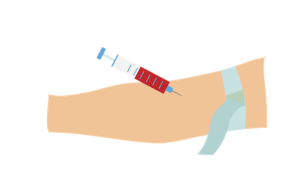 During the PRP (Platelet-Rich Plasma) facial rejuvenation procedure, a small amount of blood, typically one tube, around 10 – 15 ml is drawn usually from your arm.
During the PRP (Platelet-Rich Plasma) facial rejuvenation procedure, a small amount of blood, typically one tube, around 10 – 15 ml is drawn usually from your arm.
This procedure is the same as when you give blood for some blood tests.
prp treatment for face platelet rich plasma vampire facial PRP before and after
Step 2: Preparation of PRP

The tube with the collected blood is placed in a medical device called a centrifuge. This device separates the blood into layers, with one of these layers containing a high concentration of platelets, growth factors, and proteins essential for promoting skin healing and rejuvenation.
It takes around 10 – 15 minutes to prepare the PRP in the centrifuge.
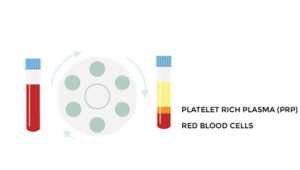
After spinning the blood tube in the centrifuge, plasma with highly concentrated platelets is collected from the tube with a syringe.
Step 3: Application of PRP
 The concentrated PRP is subsequently used in the facial treatment to enhance skin texture, reduce wrinkles, and stimulate collagen growth.
The concentrated PRP is subsequently used in the facial treatment to enhance skin texture, reduce wrinkles, and stimulate collagen growth.
This can be done using a syringe or a microneedling device called Derma Pen, which resembles a lint roller with tiny needles. Depending on your concerns, your doctor may also choose to inject a filler along with the PRP to provide immediate results.
Before or after the blood collection step for PRP treatment, a numbing cream can be applied topically to the target area. This is done to ensure the comfort of the procedure and help minimize any potential discomfort associated with the injection or micro-needling process. The application of a numbing cream is a common practice to enhance the overall patient experience and make the treatment as comfortable as possible.
This comprehensive procedure harnesses the healing properties of platelets to enhance skin quality, promote collagen growth, and address specific concerns on the face or scalp. The combination of PRP and, if necessary, fillers, contributes to a more tailored and potentially more immediate improvement in the appearance of the treated area.
What should I know about PRP Face aftercare?
- Expect some redness, small pin prick marks, Pinpoint bleeding, and minor bruising. You may have a bruise at the blood draw site.
- No touching, rubbing, scratching, peeling, picking, physical pressure, or massaging of the treated area for 6 hours after treatment, including facials. For 72 hours, do not scrub, exfoliate, or aggressively massage the treated area.
- For at least 6-8 hours do not wash your skin. It’s best to leave the PRP on the skin for at least 8 hours.
- After PRP procedure, we will apply a topical antibiotic ointment (Fucidin) You can apply the same at home.
- After 6-8 hours of treatment, you can wash your face gently with a mild cleanser twice daily.
- Avoid smoking, alcohol, pain relievers called “NSAIDs,” (ibuprofen, aspirin, naproxen etc.) and caffeine for 3 days (if possible, try for 7 days). You may take paracetamol (acetaminophen) (Tylenol, or Panadol, etc.) for pain as it does not affect inflammation and skin repair mechanisms. Continue increased water intake the first week after your treatment.
- Avoid makeup for at least 24 hours and until healed. You may return to your regular skin care routine when healed.
prp treatment for face platelet rich plasma
- Use a clean pillow case for 3 nights following your procedure. Try to sleep on your back, face up and slightly elevated.
- Avoid strenuous exercise or sweating for 24 hours due to open pores.
- Avoid expose the treated area/s to direct high heat, or engage in activities that will get you wet or cause you to sweat (e.g., blow dryer, sun exposure, swimming pool, sauna, steam room, Jacuzzi, very hot shower, strenuous exercise, etc.) for 3 days.
- You may experience an itchy sensation and dryness of the treated area. You may use moisturizer to ease these symptoms.
- Avoid sun exposure for 3 days and if possible 10 days. Apply a minimum of SPF 50 every 2 hours.
- Recommend follow up and repeat treatments in 4 weeks and for best results a series of 3 – 6 treatments.
- Within two (2) days following your Micro-Needling procedure, you may notice skin dryness and flaking. This is due to an increased turnover of skin cells. During this period, you may apply your regular skin moisturizer. For up to 2 weeks, the treated area may feel firm, but it will soften over time, and you should see supple, younger skin.
- A week after the Micro-Needling procedure, most patients notice that their skin is smoother and more radiant. Continue with sun protection every day and reapply every 2 hours if outdoors.
- Do not use blood thinning agents such as vitamin E, vitamin A, Ginko, Garlic, Flax, Cod Liver Oil, Essential Fatty Acids and at least one week after your treatment.
- Eat a healthy diet that is rich in vitamins and minerals (like iron, zinc, vitamin B12, and biotin).
PRP Face Vampire Facial
When To Contact Your Doctor:
- Drainage.
- Increased warmth at or around the treated area.
- Fever of 38.5 C (101 F) or greater.
- Severe pain that is unresponsive to over-the-counter pain relievers.

before and after
How Long does PRP Face Injections Take to See Results?
One significant advantage of opting for PRP treatment for smoother skin is the minimal downtime associated with the procedure. The recovery time is short since only a small amount of blood is drawn to obtain the necessary PRP, and the injection process is straightforward and uncomplicated.
It’s important to highlight that patients undergoing PRP treatment may witness improvements in various facial issues at different rates. For example, sunspots and dark spots might fade or disappear in as little as two to three months, while dull and dry skin could appear revitalized within just a few days. During your initial appointment, an experienced professional can assess your skin’s needs, estimate the required length of treatment, determine the necessary number of sessions, and provide an approximate duration for your PRP results. Seeking the expertise of professionals ensures a customized treatment plan tailored to your skin’s specific requirements.
before and after
How long do PRP Face Treatment Results Last?
PRP facial results generally last between 6-12 months. The duration of these results can be influenced by your specific skin type. Typically, noticeable results, especially after the initial treatment, can be expected to persist for around 6 to 12 months. The positive effects of a PRP facial become visible within a few weeks following the procedure and continue to improve over time.
For optimal and long-lasting results, collaborating with your doctor to establish a structured skincare plan, which may involve multiple PRP facial treatments, is recommended. Factors such as lifestyle, age, genetics, and other individual considerations will also contribute to the quality and duration of the results. Developing a personalized plan ensures a tailored approach to maintaining the benefits of PRP facial rejuvenation over an extended period.
before and after
What is Better than Micro-needling with PRP?
Microneedling with PRP has gained popularity as a go-to treatment for achieving visible results in improving overall skin texture, laxity, pores, fine lines, and wrinkles. However, it’s not uncommon for patients to experience redness or discomfort as potential side effects. While many find these effects to be worthwhile given the results, there’s an openness to exploring alternative options that may deliver similar or even superior outcomes.
In this context, microneedling with exosomes, particularly in conjunction with technologies like Morpheus8, has emerged as a more popular choice. This approach is favored for its ability to not only address the aesthetic concerns but also to calm inflamed skin and enhance overall results. The preference for microneedling with exosomes may stem from its potential to offer a well-rounded treatment experience with improved comfort and efficacy, making it an appealing alternative for individuals seeking advanced skincare solutions.
Does my Health Insurance Cover PRP Face?
When PRP Face treatments are utilized for cosmetic purposes, it is typically not covered by insurance. For coverage information, it is advisable to consult with your health insurance provider to understand the specific details regarding coverage and potential reimbursement.
Frequently Asked Questions about PRP:
Transform Your Reflection: Unleash Your Natural Beauty with Dermal Fillers.
Your Skin, Decoded: Experience the Power of Digital Analysis for Personalized Skincare.
aesthetic aesthetics collagen Dubai face lift face lifting facelift healing micro needle micro needling Micro-needling microneedling plasma platelet Platelet Rich Plasma Plateletherapy PRP PRP Face PRP Facial skin skin rejuvenation skincare skintightening vampire facelift Vampire facial


